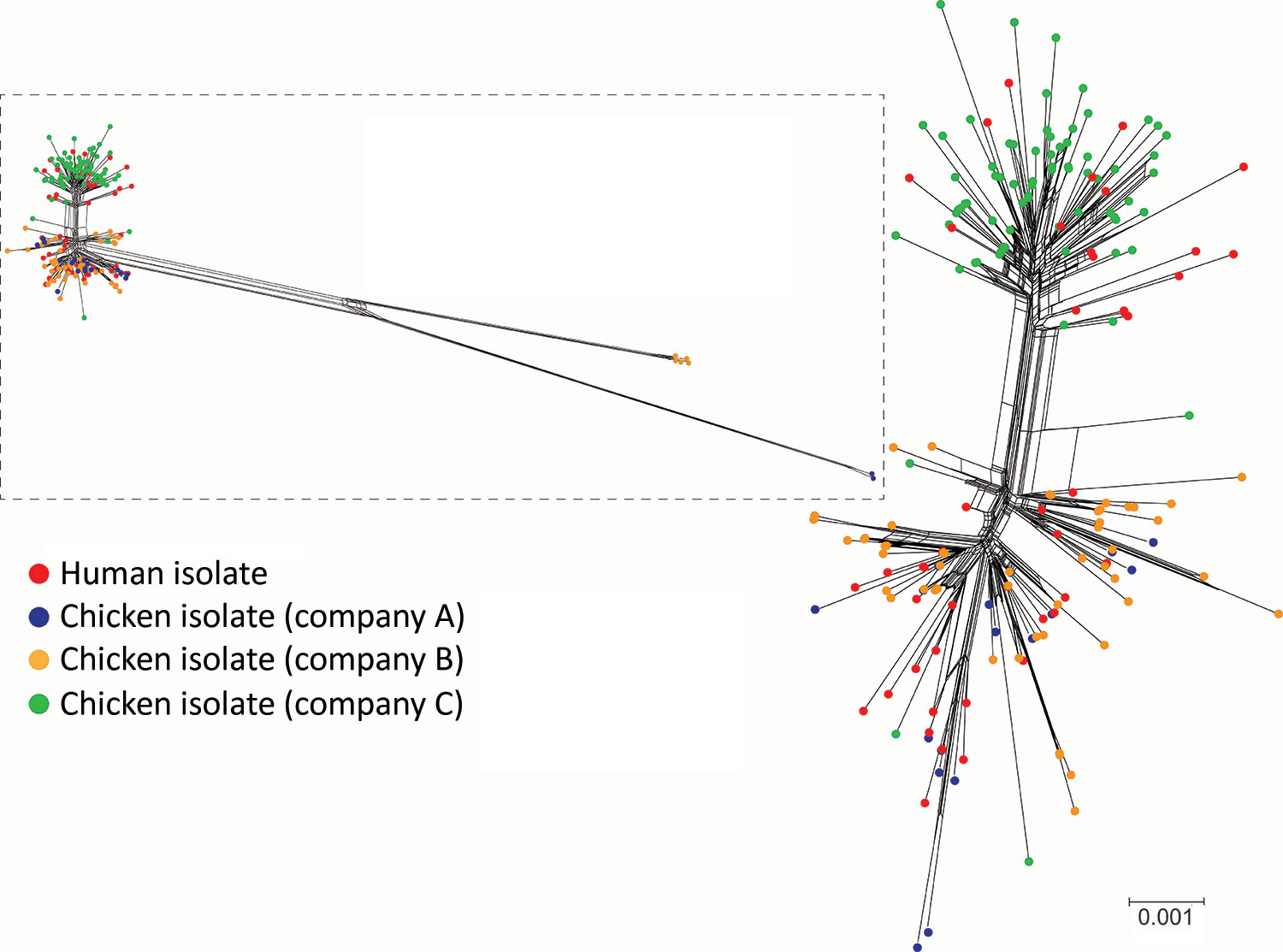Volume 25, Number 12—December 2019
Research
Genomic Analysis of Fluoroquinolone- and Tetracycline-Resistant Campylobacter jejuni Sequence Type 6964 in Humans and Poultry, New Zealand, 2014–2016
Figure 1

Figure 1. NeighborNet phylogenies generated from the allele profiles identified in the whole-genome multilocus sequence typing analysis of 227 sequence type 6964 Campylobacter jejuni isolates from humans and poultry, New Zealand, 2014–2016. The corrected NeighborNet network was generated after eliminating the 87 loci that were identified in predicted recombinant regions (Appendix Table 1). Inset shows the uncorrected NeighborNet network, generated with the original 1,363-loci allele profiles. Scale bar indicates the whole-genome multilocus sequence typing distance, which represents the number of allelic differences per shared locus.
Page created: November 18, 2019
Page updated: November 18, 2019
Page reviewed: November 18, 2019
The conclusions, findings, and opinions expressed by authors contributing to this journal do not necessarily reflect the official position of the U.S. Department of Health and Human Services, the Public Health Service, the Centers for Disease Control and Prevention, or the authors' affiliated institutions. Use of trade names is for identification only and does not imply endorsement by any of the groups named above.